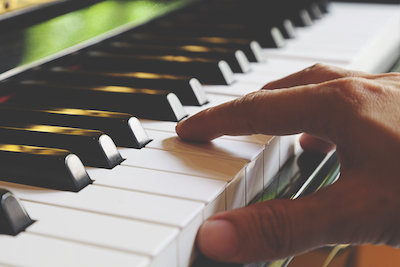When you watch a professional piano player in action, you’ll see their hands zip up and down the keyboard, flying over the keys. Between their thumbs and fingers, they touch note after note bringing music to life.
Musicians come in all sizes, male and female. It doesn’t seem to matter how large their hands are or how large of a hand span they have to stretch two specified intervals on a keyboard. Or does it?
The average octave placement for hand span ranges around 6.7 inches. Adding in a 9th note increases the hand span to 7.6 inches, 10th note increases to 8.5 inches, and 11th note increases the hand span to 9.4 inches.
When you compare that to the average hand span of a woman, you’ll find that 70 percent can not comfortable span an entire octave, with an even larger majority not being able to add a 9th note to their playing ability per hand.
For males, the playability is better, with a significant majority of males able to play an octave very comfortably, stretching to a 10th note or more fairly easily.
The female hand is, on average, 15 percent smaller than the male hand. And because children often start playing the piano at an early age, it is also important to realize that they will have an even smaller range than the average woman.
Standardized keyboards are a relatively recent development and the size we commonly use today is large compared with historical context. The 6.5 inch octave keyboard does not suit the vast majority of women and children. It’s also often not the best choice for men, from an ergonomic perspective.
Some of the greatest pianists of the past have used pianos with narrower keys. And with people who enjoy playing the piano and have a passion for improving the way they play, they often find using alternative sized piano keyboards to be a better fit. Downsized keyboards allow pianists to play more music without fear of injury. Hand position is immediately improved and power increases because the hand is compact. Redistribution of complex fingering is no longer necessary.
As it becomes more apparent that the art of piano playing can change simply by rethinking the size of a keyboard, we’ll see more changes in the instruments we play.
Do you have experience with a smaller keyboard?

